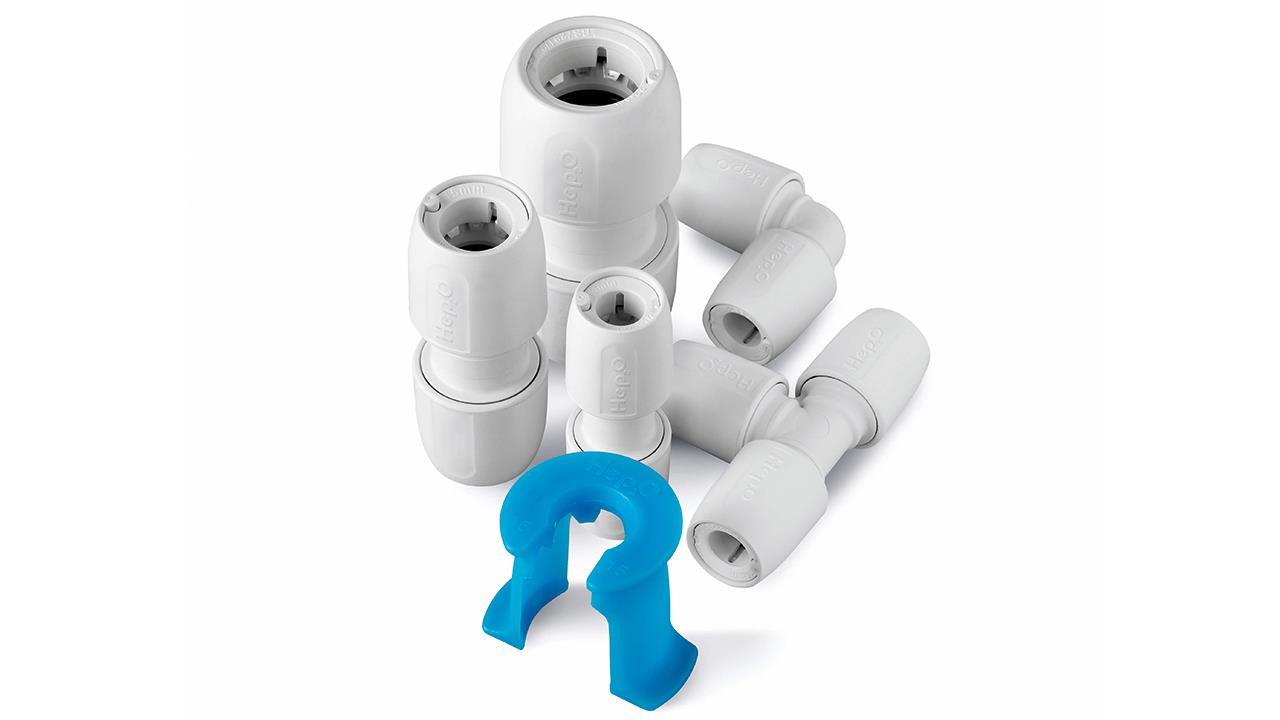

The last two years have been incredibly busy for plumbers, and if the latest sales figures from the Plumbing and Heating Merchant Index paint an accurate picture, this isn’t changing any time soon. While this may be great news for your business, jam-packed schedules mean you’re up against it when it comes to time.
More than ever, you need products that make your jobs quicker to complete, while still allowing you to provide top-notch work. One easy fix is incorporating plastic push-fit systems more regularly.
Versatility is a key strength of plastic products, and you’ll already know that they can be quickly and easily combined with copper pipes.
So, why not just use copper on all projects, rather than plastic? Well, for quite a few reasons. The plastic used in push-fit products is both strong and incredibly flexible. These products are actually much easier to work with than copper alternatives, which makes them a lifesaver for plumbers working in tight, awkward, or hard to reach areas where flexibility is a must.
The polybutylene pipe can be more easily cabled around nooks and crannies than copper and, where there’s a slight bend in the network, plastic can be used. Last minute changes or pesky obstructions on jobs crop up a lot, so having a product that can get around these challenges is important.
Making the right connection
Being able to complete a job more efficiently also relies on good connections and that’s where the push-fit comes up trumps.
Admittedly, when installing in tight spaces, it can be a bit more difficult to gain the force needed to connect the fittings, but this is where a smart sleeve comes in handy.
Pipe support sleeves reduce the force needed to push the pipe into the fittings, helping you save time, and allowing for a more efficient installation.
Coping under pressure
One question installers tend to raise about plastic is whether the products can handle the pressure as well as copper, and yes, they can. Polybutylene plastic is actually 288 times more flexible than copper, which makes it far less likely to snap under pressure.
British Piping Standards require pipes to pass the 44 bar pressure test, but Wavin Hep2O, for example, goes one step further, being able to withstand pressure up to 68 bar.
To put that into context, to physically burst these pipes, the water running through them would need to be under a similar force to a pressure washer; something that’s not very likely to happen. This also gives it the added benefit of being crush-resistant, so don’t worry if you accidentally step on the pipes from time to time; they should be fine.
Plastic can take the heat
Plastic push-fit is also great in fluctuating temperatures. In fact, systems such as the Wavin Hep2O can handle temperatures of up to 120ºC for short periods of time, which is higher than required by British Standards. Normally, heating systems run at 85ºC over long periods of time, which is well within capacity of the push-fit systems.
The systems are also super resistant to the cold, keeping their flexibility in temperatures as low as -15ºC, which makes them unlikely to burst in freezing conditions, unlike rigid copper systems.
Peace of mind
When it comes to benefits for you and your customers, there’s no shortage of reasons to consider a switch to plastic push-fit. These systems offer a combination of flexibility, efficiency, and ease of installation which other materials simply don’t have. And, if you’re facing challenges from an increasing workload, they’re definitely worth another look.
If you'd like to keep up-to-date with the latest developments in the heating and plumbing industry, why not subscribe to our weekly newsletters? Just click the button below and you can ensure all the latest industry news and new product information lands in your inbox every week.